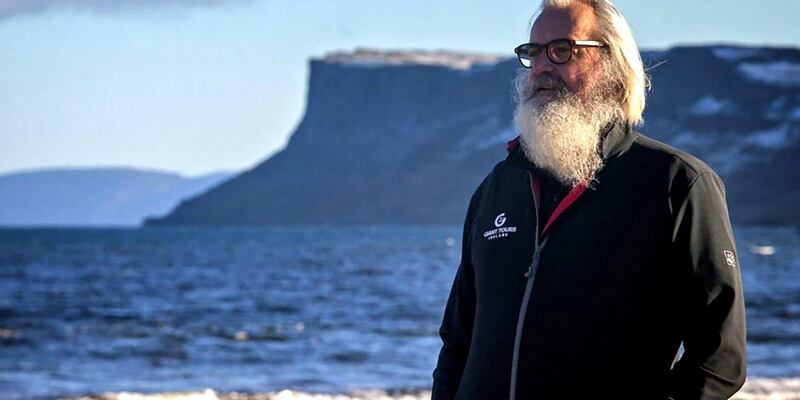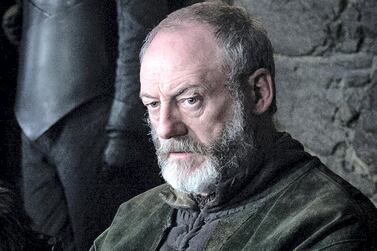When HBO decided to base the production of Game of Thrones in Northern Ireland, the world’s most watched television show breathed life into a fledgling regional film industry in need of reform and a show of faith.
Over its eight seasons, set to close in the grand finale on Sunday night, viewers from across the globe saw George R.R. Martin’s much-loved books brought to life against exotic and diverse backdrops. But an enduring staple was Northern Ireland’s hills and coastline.
The hype around the show also kickstarted the unexpected career for Ballycastle man and gentle giant Flip Robinson.
A former labourer and customer experience representative for National Trust – a UK heritage conservation charity – became a double for two of Game of Thrones most visible characters.
Since then, he has capitalised on his part to guide the growing number of hardcore fans and interested travellers alike who were visiting Northern Ireland with his Game of Thrones tours.
Nearly 10 years ago when the hit HBO production was recruiting for its second season, Mr Robinson found himself amongst crowds of people as they queued around the corner of a Belfast hotel in the hope of pinching some screen time as an extra.
Very few, however, were six feet and eight inches tall.
For the first few seasons, the call for extras would go out in mass messages to all those who had made it through the auditions. It wasn’t until 2015, when he was working for the National Trust at the Ballintoy’s rope bridge, that he was able to say yes when the call for extras came out again.
Replying to say he would be delighted to be involved, he cheekily reminded them of his height.
Nearly five years after first auditioning, he was suddenly hit by a barrage of messages of calls from Game of Thrones producers asking him to come in the next morning.
It was all upwards from then on.
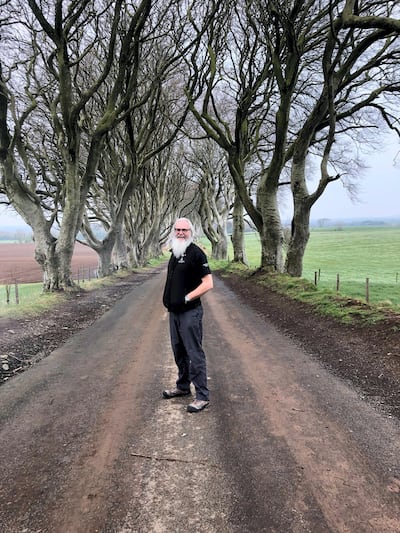
He would spend much of season six as a double for two of Game of Thrones largest characters, House Stark’s gentle giant Hodor and the towering House Lannister enforcer Gregor Clegane (aka The Mountain), mixing with shows biggest stars and privy to some of its guarded secrets.
As a local man and self-described country lover, Mr Robinson says the impact of the show on the region has been massive.
"Everybody here has someone who worked on it," he says while as he leads one of his Giant Tours.
“It’s amazing, it’s changed things completely, it really has.”
Deeply knowledgeable about the various Game of Thrones shooting locations and the region, Mr Robinson delights in explaining the significance of a particular place to the series.
But he also revels in taking fans to areas that are more remote and unable to be reached by large tour buses driving their way through Northern Ireland’s windy but well maintained coastal roads
“We’re trying to push the hidden gems, the different places.”
The beauty of Northern Ireland’s geography for the production team of Game of Thrones was that every shooting site was within an hour and a half from Belfast, the site of the main studio.
Producers clearly still love the place – even with the final season still to conclude, there is evidence that a forthcoming prequel is already in the works.
But for Mr Robinson, as a local he wants to show off the rest of Northern Ireland’s rural locations and the “beautiful little places”.
He said the idea for his business came to him because he realised so many people were missing out on what the region had to offer by just visiting the well-known – and easy to reach – Giant’s Causeway.
Not long after his Game of Thrones stint, he began working sporadically as a guide to the 40,000 interlocking basalt columns that make up the causeway near the town of Bushmills to gain experience before setting out on his own undertaking.
In 2016, he fully launched Giant Tours after a marketing course with help from a government tourism agency, who urged him to crack on with his ideas given his experience and love of the series.
“It changed my life,” he says of his role on the show. But it also helped change and propel the region to a degree too, he says.
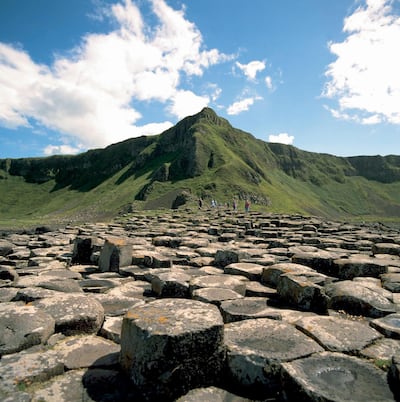
The world heritage status Giant’s Causeway receives over a million visitors a year and is well appointed with a regular bus service that takes tired visitors up a hill from the sea to the 18.5 million pound (Dh 86.5 million) visitor centre. But tourists are increasingly being tempted by other areas and their now illustrious cinematic showing.
Flocks of sheep often block the sometimes narrow interior roads around Northern Ireland but on an overcast April day, around a dozen people walk along a picturesque stretch of the series’ most famous thoroughfare, the King’s Road, despite it only being seen for a matter of seconds in a single episode.
“This is quiet at the moment,” says Mr Robinson. The stretch – Bregagh Road, near the village of Armoy in County Antrim – is now so popular that the government closed it to traffic and turned it into a tourist site.
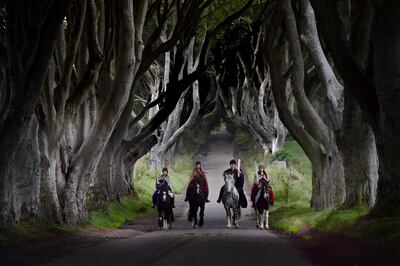
Much of the incentives when HBO began their journey in the region came from government agency Invest Northern Ireland.
Ten years ago, a bizarre system meant only films, not TV shows, were able to get tax credits, says the body’s CEO Alastair Hamilton.
But, he says he and his team urged the UK government to see the opportunity of expanding the remit for Game of Thrones as the lasting impact could generate hundreds of millions of pounds.
“On the back of that, we supported development of individual skills and capabilities,” he said from his Belfast office, giving examples such as plastering, carpeting and dressmaking for the film industry.
It is a “capability that will last beyond Game of Thrones,” he added.
Mr Hamilton also said that investments made to build infrastructure for the HBO series, such as new studios, have now attracted BBC productions such as hit shows Line of Duty and Belfast-backdropped The Fall.
The main indoor shooting platform for Game of Thrones was the Titanic Studios, where the famed and ill-fated ship was built between 1909 and 1911. Part of the changing face of the once industrial city, it stands ready for production teams looking to start filming what might be the next breakout series.
